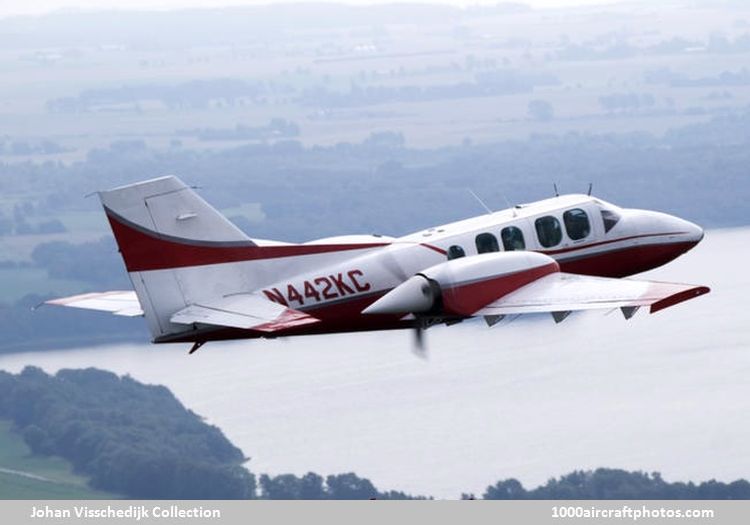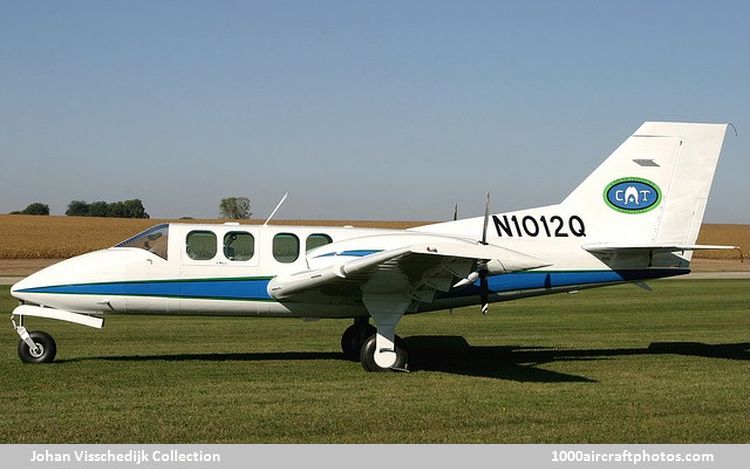JOHAN VISSCHEDIJK COLLECTION
No. 14021. Angel 44 (N1012Q/VH-IAZ c/n 004, N442KB c/n 002, N442KC c/n 003)
No. 14021. King's 44 Angel (N44KE c/n 001)
Photographs from TKEF and AAC
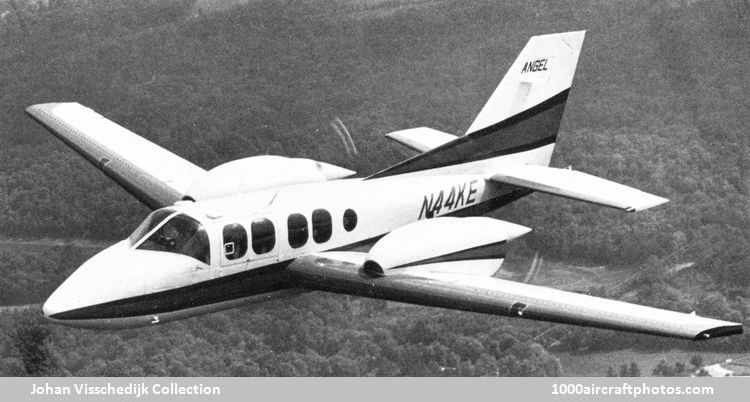
08/31/2021. Remarks by
Johan Visschedijk: "New aircraft at the EAA's 1985 Oshkosh Convention included a light twin-engined aircraft known as the Angel.
Intended for missionary flying and utility and humanitarian duties, the Model 44 Angel was designed by Carl A. Mortenson, who designed and built an earlier light twin, named
Evangel, for similar operations. Development was sponsored by the Back To The Bible organization and design work began at the home of designer Carl Mortenson in 1972, Mortenson also formed the non-profit The King's Engineering Fellowship (TKEF) to support the design and later construction of the Angel. Design goals included low manufacturing costs, STOL capability, suitability for rough and soft field operation, sturdiness, easy maintenance and repair in the field, and the ability to accommodate bulky cargo. The design phase involved more than 11,000 man hours of work on over 1,000 drawings.
Mortenson began construction of the prototype, also from his home, in 1977, but, because of its size, had to move operations to the Municipal Airport at Orange City in 1980. Registered N44KE, the Angel flew for the first time on January 13, 1984, and had logged over 250 flying hours by August 1986. During the test program, the engines were raised above the wing on pylons for a period, outboard 'trimmerons' were added for improved single-engine control (roll control being normally by means of spoilers), and tail plane span was increased. Later, the engines were replaced immediately on top of the wings, in longer nacelles, to increase cruising speed by an estimated 15 mph (24 kmh). Structural testing began 1990 and on October 20, 1992, TKEF received the Type Certificate No. A2W1 for the Angel. The aircraft is still registered to TKEF as of this day.
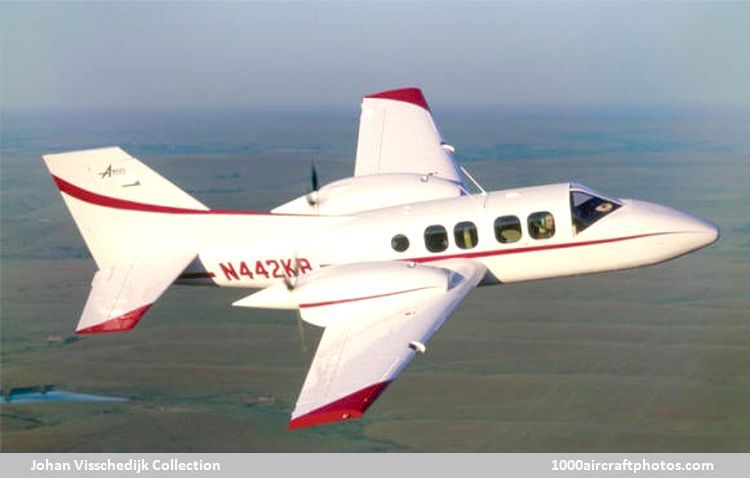
Angel 44 (N442KB)
By 1986 the Angel Aircraft Corporation (AAC) had been founded, president was the designer and constructor Carl Mortenson, chief engineer was Ed Mortenson. The FAA states in the
TC that under a licensing agreement between TKEF and AAC, dated October 4, 1986, the AAC would manufacture production aircraft, however, the first aircraft (c/n 002) was not completed until 2002. Registered N442KB, it was subsequently operated by South America Mission of Fort Mill, South Carolina. November 23, 2015, the registration was cancelled as the aircraft had been registered in Bolivia as CP-3041.
Angel 44 (N442KC)
AAC received the Production Certificate on September 23, 2003 under which the second production aircraft, c/n 003, was completed later that year. Registered N442KC, it received its
CofA on February 24, 2004. Presently it is registered to Bulow-Nicolaisen Aviation of Potomac, Maryland.
Angel 44 (N1012Q)
The third production aircraft, c/n 004, was completed in 2008 and was registered to AAC as N1012Q on January 29, 2008. The registration was cancelled on December 10, 2009 as the aircraft was sold to Australia.
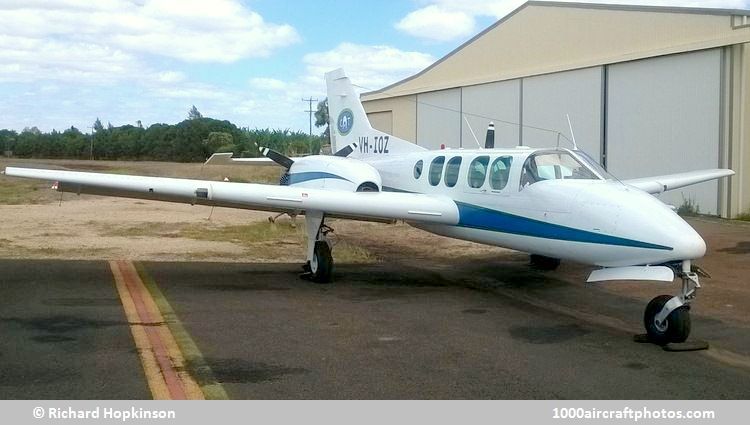
Angel 44 (VH-IOZ) (
Richard Hopkinson Collection)
In Australia it was registered VH-IOZ (
more photos) to Milkwood Holdings (doing business as Cape Air Transport) at Horn Island, Queensland, on January 8, 2010. Subsequent owner became Anju Azul Aviation of Cooktown, who cancelled the registration on November 14, 2017, as the aircraft was put up for sale. Sixteen months later the aircraft was still not sold and Anju Azul Aviation had its aircraft reregistered on March 29, 2019, this time as VH-IAZ.
On December 14, 2019, during a pilot review flight, the aircraft was lost in a crash near Mareeba Airport, Mareeba, Queensland. The pilot had made a touch and go and at a height of about 100-150 ft (30-45 m) entered a right descending turn. After about 20 seconds in the air, the aircraft rolled rapidly to the right and impacted terrain in 475 m north of the runway. Both the pilot and reviewer sustained fatal injuries and the aircraft was destroyed.
No more Angel aircraft have been built in the USA, however, on April 3, 2013, Hubei Taihang Xinghe Aircraft Manufacturing at Xiangyang in the Hubei District, China, acquired a license contract to manufacture the AAC 44. The type was approved by the Chinese National Civil Aviation Administration on July 17, 2015. Reportedly the first Chinese example was substantially completed in May 2016, when the Hubei local government provided funds to establish a new manufacturing plant, this prompted Qinghai General Aviation to order fifty Angel aircraft. The new company, Chenlong Aircraft (Jingmen) Company was established on March 2, 2017 in Jingmen, operating under the name Aloong Aircraft (Jingmen) Company. On July 23, 2018, the US firm BendixKing signed a contract to provide flight displays and autopilots for Aloong's Angels. Unfortunately there is no indication further aircraft have been built.
The following data is referring to the prototype King's 44 Angel N44KE.
Type: Twin-engined light utility transport.
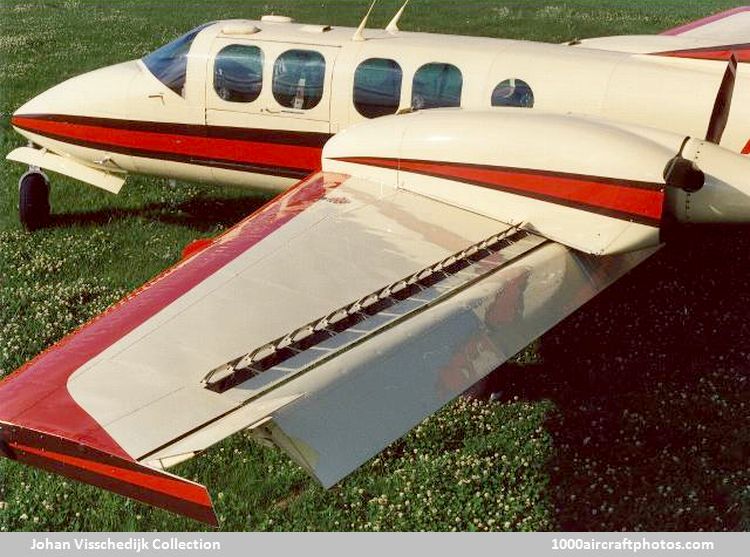
Fowler flap, multiple spoilers and 'trimmeron'
Wings: Cantilever low-mid wing monoplane. Wing section modified NACA 23018-23010 with modified leading edge. All-metal riveted structure, with built-up aluminum alloy capstrip spars and nineteen die formed ribs each side. Near full span hydraulically actuated Fowler flaps. Multiple small-plate spoilers, forward of flaps, for roll control, supplemented by outboard 'trimmeron' between flap and wing tip on each trailing edge.
Fuselage: Conventional aluminum alloy riveted semi-monocoque structure.
Tail unit: Cantilever aluminum alloy riveted structure, with sweptback vertical surfaces and long dorsal fin.
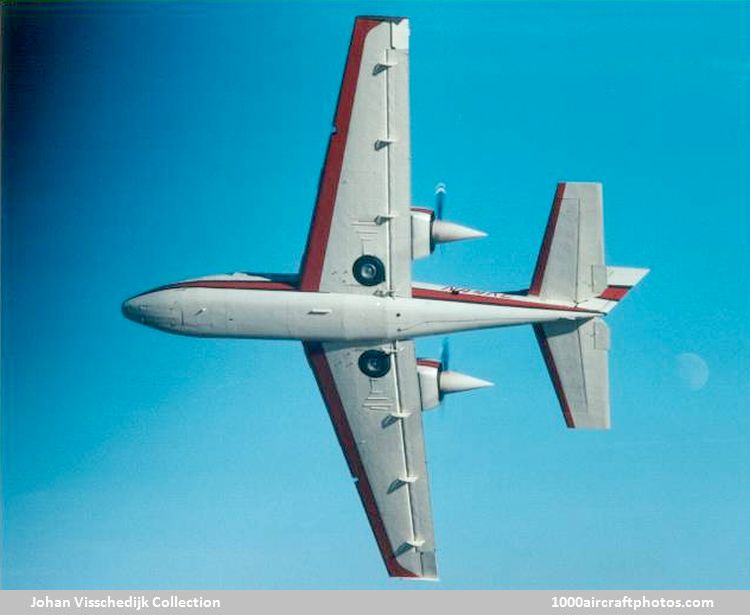
main wheels in wing roots
Landing gear: Retractable tricycle type. Electrohydraulic retraction, main wheels inward into wing roots, nose wheel rearward. Emergency extension by hand pump or gravity. Tire size: main wheels 8·50-10, nose wheel 8·50-6. Cleveland brakes.
Power plant: Two 300 hp Avco Lycoming IO-540-M flat-six engines, mounted on top of the inboard wings and each driving a Hartzell three-blade constant-speed feathering pusher-propeller.
Accommodation: Enclosed cabin seating up to eight persons, including pilot. Five seats can be removed for carrying cargo, including four 55 gal (208 l) drums. Rearmost bench seat is fixed. Four large windows and one smaller circular window on each side of cabin. Horizontally divided 'clamshell' door on port side at front of cabin; emergency exit on starboard side. Heating and window air vents standard. Compartment for 200 lb (90 kg) of baggage at rear of fuselage, with door on port side.
Systems: Hydraulic system, with electric pump, for landing gear and flap actuation. Electrical system includes 12V battery in fuselage nose.
Avionics and equipment: Blind-flying instrumentation standard. King avionics, including twin com/nav transceivers, glideslope, and dual ADF. Weather radar, Loran-C and HF com optional.
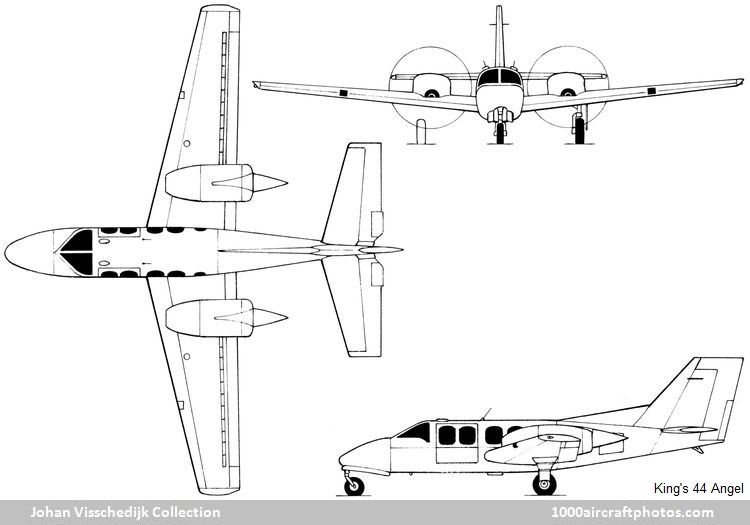
Created August 31, 2021



